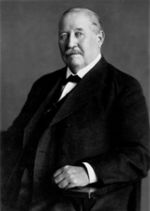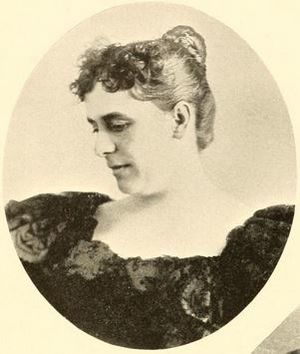Thomas B. Catron facts for kids
Quick facts for kids
Thomas B. Catron
|
|
|---|---|
 |
|
| United States Senator from New Mexico |
|
| In office March 27, 1912 – March 3, 1917 |
|
| Preceded by | Office Created |
| Succeeded by | Andrieus A. Jones |
| 13th Mayor of Santa Fe, New Mexico | |
| In office 1906–1908 |
|
| Preceded by | A. R. Gibson |
| Succeeded by | José D. Sena |
| Member of the U.S. House of Representatives from New Mexico Territory's At-large congressional district |
|
| In office March 4, 1895 – March 3, 1897 Delegate |
|
| Preceded by | Antonio Joseph |
| Succeeded by | Harvey Butler Fergusson |
| Personal details | |
| Born | October 6, 1840 near Lexington, Missouri |
| Died | May 15, 1921 (aged 80) Santa Fe, New Mexico |
| Political party | Republican |
| Spouse | Julia Anna Walz Catron (1857–1909) |
| Residence | Santa Fe, New Mexico |
| Alma mater | University of Missouri |
| Profession | Attorney |
| Military service | |
| Allegiance | |
| Branch/service | |
| Years of service | 1861-1865 |
| Rank | First lieutenant |
| Commands | 3rd Missouri Battery |
Thomas Benton Catron (October 6, 1840 – May 15, 1921) was an important American politician and lawyer. He played a big part in making New Mexico a U.S. state. He even became one of its first U.S. Senators.
Catron was born in Missouri and went to the University of Missouri. He fought for the Confederate States Army during the American Civil War. After the war, he moved to the New Mexico Territory. There, he learned Spanish, studied law, and became a lawyer.
Even though many people from the South were Democrats, Catron was a Republican. He quickly became well-known in law and politics. He served as a district attorney, the territory's attorney general, and a United States Attorney. He also served on the New Mexico Territorial Council, was a Delegate to Congress, and was Mayor of Santa Fe.
Besides his law work, Catron used his knowledge of old Spanish land grants to buy over 3 million acres of land. This made him the biggest landowner in New Mexico. When New Mexico became a state, lawmakers chose Catron as one of its first U.S. Senators. He served from 1912 to 1916. He passed away in Santa Fe and was buried there.
Contents
Early Life and Education
Thomas Benton Catron was born on October 6, 1840, near Lexington, Missouri. He was named after a famous Missouri Senator, Thomas Hart Benton. He went to public schools in Lexington and also attended Masonic College. In 1860, he finished his studies at the University of Missouri.
Serving in the Civil War
During the American Civil War, Catron joined the Confederate States Army. He was part of an artillery unit led by Hiram M. Bledsoe. Catron fought in several battles, including Carthage, Wilson's Creek, Second Lexington, and Pea Ridge.
By the end of the war, Catron was a first lieutenant. He was in charge of the 3rd Missouri Battery. Later in the war, he served in Tennessee, Alabama, and Mississippi. He surrendered in Mississippi when the war ended.
Life After the War
After the Civil War, Catron went back to Missouri and started studying law. In 1866, he moved to the New Mexico Territory. He first lived in Las Cruces before settling in Mesilla.
He brought two wagon loads of flour with him, which he sold to pay for his law studies. He also brought a Spanish grammar book and quickly learned to speak Spanish fluently. Catron finished his law studies and became a lawyer in 1867.
His Political Journey
Unlike many Southerners who supported the Confederacy, Catron became a Republican. Soon after he started practicing law, he was chosen as the District Attorney for the Third Judicial District. He held this job until 1868.
In 1869, he was named Attorney General for the New Mexico Territory. In 1872, he became the United States Attorney for New Mexico. His law partner, Stephen Benton Elkins, had held this job before him. Catron served as U.S. Attorney until 1878.
While working as U.S. Attorney, Catron moved to Santa Fe. In 1884, he was elected to the New Mexico Territorial Council. He served on the council again in 1888 and 1890. In 1892, Catron tried to become a Delegate to Congress but did not win. He ran again in 1894 and won, serving from March 4, 1895, to March 3, 1897. From 1895 to 1896, Catron was the President of the New Mexico Bar Association. He tried to get reelected to Congress in 1896 but lost. He served on the Territorial Council again in 1899 and 1905.
From 1906 to 1908, Catron was the Mayor of Santa Fe.
A Big Landowner
As a lawyer, Catron knew a lot about old Mexican land grants. He gained ownership of 34 land grants, which added up to about 3 million acres. He was part of a group of land investors known as 'The Santa Fe Ring.' This made him the largest single landowner in New Mexico and one of the biggest in the United States.
Becoming a U.S. Senator
Catron strongly supported New Mexico becoming a state. In the early 1900s, he worked with the Republican Party in the territory to convince national Republicans to let New Mexico join the Union.
When New Mexico became the 47th state in 1912, the New Mexico State Legislature chose Catron as one of its first U.S. Senators. Catron won the "long term" (four years). He took office on March 27, 1912.
To win his Senate election, Catron made an agreement with Albert B. Fall, another politician. This agreement helped both of them get elected. However, this upset some New Mexicans of Spanish heritage, who had hoped one of their own would become a Senator.
When he started in the Senate, Catron was the Chairman of the Committee on Expenditures in the Interior Department. In 1916, he tried to get reelected but lost the Republican nomination.
After leaving the Senate, Catron went back to Santa Fe. He continued his law practice and business interests. He also served in local roles, like President of the Board of Education.
Later Life and Legacy
After his time in the Senate, Catron tried to become the Ambassador to Chile, but he was not chosen. He continued to live in Santa Fe. He passed away in Santa Fe on May 15, 1921. He was buried in a special building at Fairview Cemetery.
Family Life
In 1878, Catron married Julia Anna Walz (March 28, 1857 – November 8, 1909). She was from Ohio and had lived in Mankato, Minnesota. She graduated from Oberlin College and was a teacher when she met Catron. They had five children together, and four of them lived to adulthood: John W., Charles Christopher, Thomas Benton, Jr., and Fletcher A.
Awards and Recognition
The University of Missouri gave Catron an honorary Master of Arts degree in 1868. In 1920, the university also gave him an honorary LL.D. degree.
Catron County, New Mexico is named in his honor.


